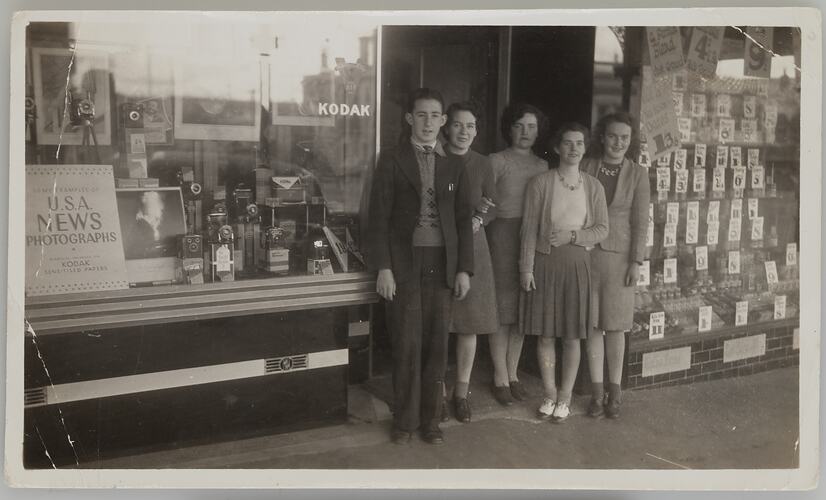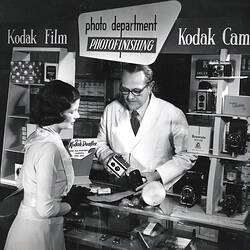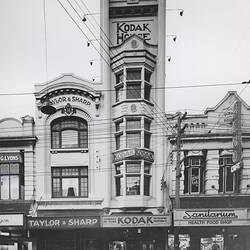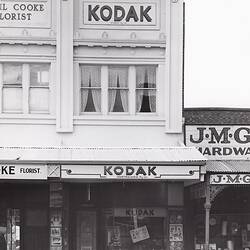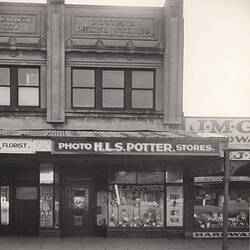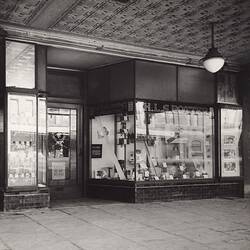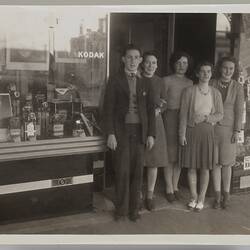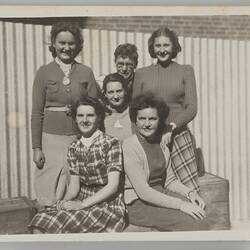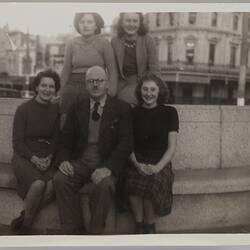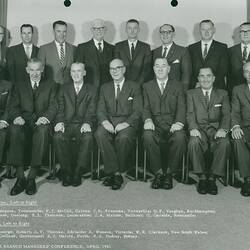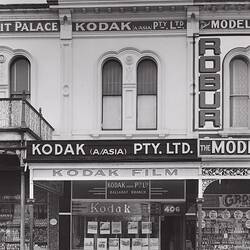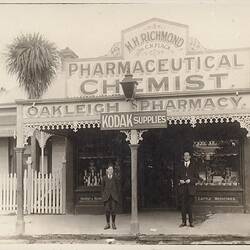Kodak Australasia's main headquarters have always been in Victoria, with the exception of retail and marketing operations in Sydney. Thomas Baker's initial manufacturing plant was located at Abbotsford so it is not surprising that the Victorian retail branches were numerous in Melbourne and that much of the state-wide distribution was managed from the capital city.
Kodak had a significant presence in regional Victoria, with an extensive network of stores and pharmacies which promoted themselves as Kodak dealers, such as R.C. Younger Chemist, Kerang, or T.C. Cooper Chemist in Bendigo which was known as the 'Kodak Depot'. The two main Kodak-owned, Victorian regional branches were Geelong and Ballarat.
The 89 Ryrie Street store in Geelong was previously an independent Kodak dealer called 'HLS Potter Photo Store', known locally as 'Potters'. It sold Kodak products and had been operating since the turn of the 20th century. After only a brief period as a Kodak Australasia Pty Ltd store in the late 1940s - 1950s, the premises, along with all of its furniture and processing equipment, was sold to new owners in 1962.
The Ballarat branch opened on Sturt Street on 1 April 1938, managed by Mr G.S. George with a staff of six. According to Connie Kennedy, who worked in developing & printing in Ballarat in the 1940s, the team processed 100 rolls of film each day during World War II. They processed film and glass plates, often without gloves, in a hot shed out the back of the store. The branch later grew to a staff of 15 and comprised retail and wholesale departments, a black and white photo finishing laboratory and a distribution centre which would have supplied many of regional Victoria's photographic stores and pharmacies with Kodak products (Beale, p57).
All of Kodak's outlets, allied pharmacies and professional clients around the state were serviced by a network of travelling Kodak sales representatives who sold product and merchandising materials. After working in retail branches and then as suburban sales representatives around Melbourne, skilled staff were often promoted to country sales representative with better cars and allowances.
"basically you were away four nights a week. You'd leave Monday morning and you'd be in a motel or a hotel every night and then you'd have a short day on Friday getting home and going to the meeting in the afternoon and then getting home for the weekend." (Harvey, 2014)
Eventually Kodak-owned retail stores were sold. The company focused instead on their pharmaceutical and department store trade and, from the 1980s, Kodak Minilab processing franchises.
References:
'Advertising.', The Argus (Melbourne, Vic. : 1848 - 1957), 20 November 1947, p. 15, viewed 17 Feb 2015, http://nla.gov.au/nla.news-article22520979
'Advertising.', Bendigo Advertiser (Vic. : 1855 - 1918), 7 Apr 1917, p. 6, viewed 17 Feb 2015, http://nla.gov.au/nla.news-article90120000
'Advertising', The Age (Melbourne, Vic. : 1854 - 1954), 15 February 1938, p. 12. , viewed 13 Apr 2017, http://nla.gov.au/nla.news-article206742123
Archive File - Kodak Archive, Series 11 'Property Titles', Sub-Series 1, File 7, 'Agreement of Sale of Plant, Equipment & Furniture 89 Ryrie St Geelong', 01 Oct 1962
Archive File - Kodak Archive, Series 11 'Property Titles', Sub-Series 1, File 6, 'Ryrie Street, Geelong' Beale, N. 1983, 'The History of Kodak in Australia'
Greg McKibbin in an interview recorded by Lesley Alves, 15 January2014, Melbourne Museum, Victoria
John Harvey in an interview recorded by Lesley Alves, 10 April 2014, Melbourne Museum, Victoria
John Kerr,in an interview recorded by Hannah Perkins, 12 February 2014, Museum Victoria Moreland Annexe, Victoria
'Photographic Service', The Argus (Melbourne, Vic. : 1848 - 1957), 23 Oct1936, p. 17, viewed 17 Feb, 2015, http://nla.gov.au/nla.news-article11928746
More Information
-
Keywords
Photography, Advertising, Retailing, Promotional Materials, Shopfronts, Photographic Products
-
Authors
-
Article types
